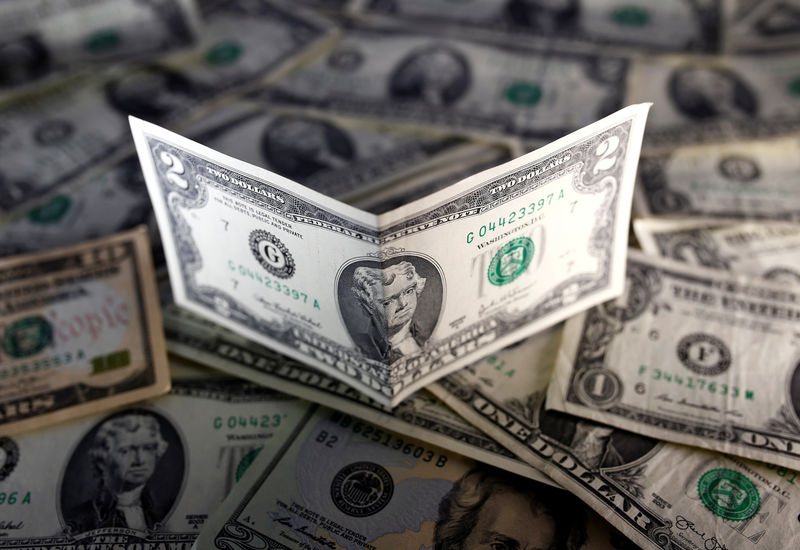 © Reuters.
© Reuters.
By Gina Lee
Investing.com – The dollar was down on Monday morning in Asia. However, it started the week on a firm foot as U.S. Treasury yields rose over expectations that the U.S. will further tighten its monetary policy. On the other hand, potential bans on Russian gas kept the euro within sight of its 2022 lows.
The U.S. Dollar Index that tracks the greenback against a basket of other currencies inched down 0.08% to 98.547 by 11:41 PM ET (3:41 AM GMT).
The USD/JPY pair edged up 0.13% to 122.66.
The AUD/USD pair edged up 0.17% to 0.7512 and the NZD/USD pair edged up 0.12% to 0.6936.
The USD/CNY pair was steady at 6.3632, with Chinese markets closed for a holiday. The GBP/USD pair inched up 0.05% to 1.3118.
The euro continues to be weighed down by concerns that Russia's invasion of Ukraine on Feb. 24 will continue to impact economic growth. It last bought $1.1047, not too far from March's almost two-year low of $1.0806.
German foreign minister Annalena Baerbock said on Sunday that the European Union must discuss banning imports of Russian gas, which will likely drag further on economic growth and the euro. Ukraine accused Russian forces of carrying out a "massacre" in the town of Bucha, which the Russian defense ministry has denied.
"Negative news on the war or a further lift in energy prices could see EUR/USD test $1.0800," Commonwealth Bank of Australia analysts said in a note.
"However, an improvement in sentiment or a weak dollar following the U.S. Federal Reserve minutes could push EUR/USD through upside resistance around $1.1150," they added, in reference to the central bank’s minutes from its latest meeting, due to be released on Wednesday.
The possibility of new sanctions meant investors remained cautious in early trade. The dollar was also slightly up against the riskier Australian and New Zealand dollars as cooling export prices eases gains for the Antipodean currencies.
Friday's U.S. jobs report was stronger than expected, with non-farm payrolls rising by 431,000 and the unemployment rate at 3.6%, in March. Further data also showed that the Institute of Supply Management manufacturing purchasing managers index (PMI) for March was 57.1, while the manufacturing PMI was 58.8. The data was enough to spur bets that the U.S. Federal Reserve will continue to tighten its monetary policy.
Fed funds futures have priced a near four-in-five chance of a 50-basis point hike in May and two-year yields stand at a three-year high of 2.4930%.
The yen steadied during the previous week after its pummeling throughout March. However, expectations of higher U.S. interest rates against anchored Japanese yields saw the yen drop back below 122 per dollar.
However, "the yen is not out of the woods," Rabobank senior strategist Jane Foley told Reuters.
"Another prolonged bout of severe selling pressure on the yen could put pressure on the Bank of Japan to re-think its policy. We forecast further upside for dollar/yen towards the 125 level in the latter half of 2022."

